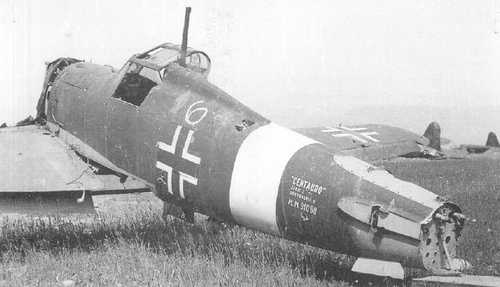
German Air Force
An interesting wreck
This wreck of a Luftwaffe’s G.55, photographed on a Northern Italy airport, perhaps Turin-Aeritalia, note two G.12s destroyed on background, is very interesting because show one of the two “Centauro”, the Sottoserie 0, military code MM91068, completed but not yet delivered to Regia Aeronautica (the other was the MM91069) at the date of Armistice and afterwards commandeered by Germans. The Luftwaffe was interested to new Italian Series 5 fighter which was evaluated in February 1943 by a German commission. In particular the German commission was very impressed by the G.55 and was planned a possible production in Germany of the “Centauro” considered a good candidate for the new DB603 engine. During Spring 1943 the G.55 was tested at Rechlin, in Germany, and the Luftwaffe purchased three G.55s Sottoserie 0 (MM91064, MM91065, MM91066) for evaluations and experiments giving in change three DB603 engines and original machinery for the setup of other production lines of the DB605/RA1050 RC58 I. Two Luftwaffe G.55's remained in Turin, at the Fiat-Aeritalia plants, where they were used by German and Italian engineers to study the planned modifications and the possible optimizations to the production process. Later the two planes were converted to Serie I, with 20 mm cannon in the wings, and delivered to the Repubblica Sociale Italiana’s Air Force. The third “Centauro” was transferred in Germany, to Rechlin for tests. The DB603 engines were used to build the G.56 prototype. After the Italian Armistice, in October 1943 Kurt Tank, who previously personally tested a G55 in Rechlin, was in Turin to discuss about the G.55 production. But finally the G.55 program was abandoned by the Luftwaffe because the war’s events and the difficult of the Italian fighter’s production: an early production G.55 required about 15,000 man hours, was evaluated the possibility of reduce the work to 9,000 man hours while a Bf.109 were assembled in only 5,000 man hours. Victor Sierra
2892 Views
2/14/2012
